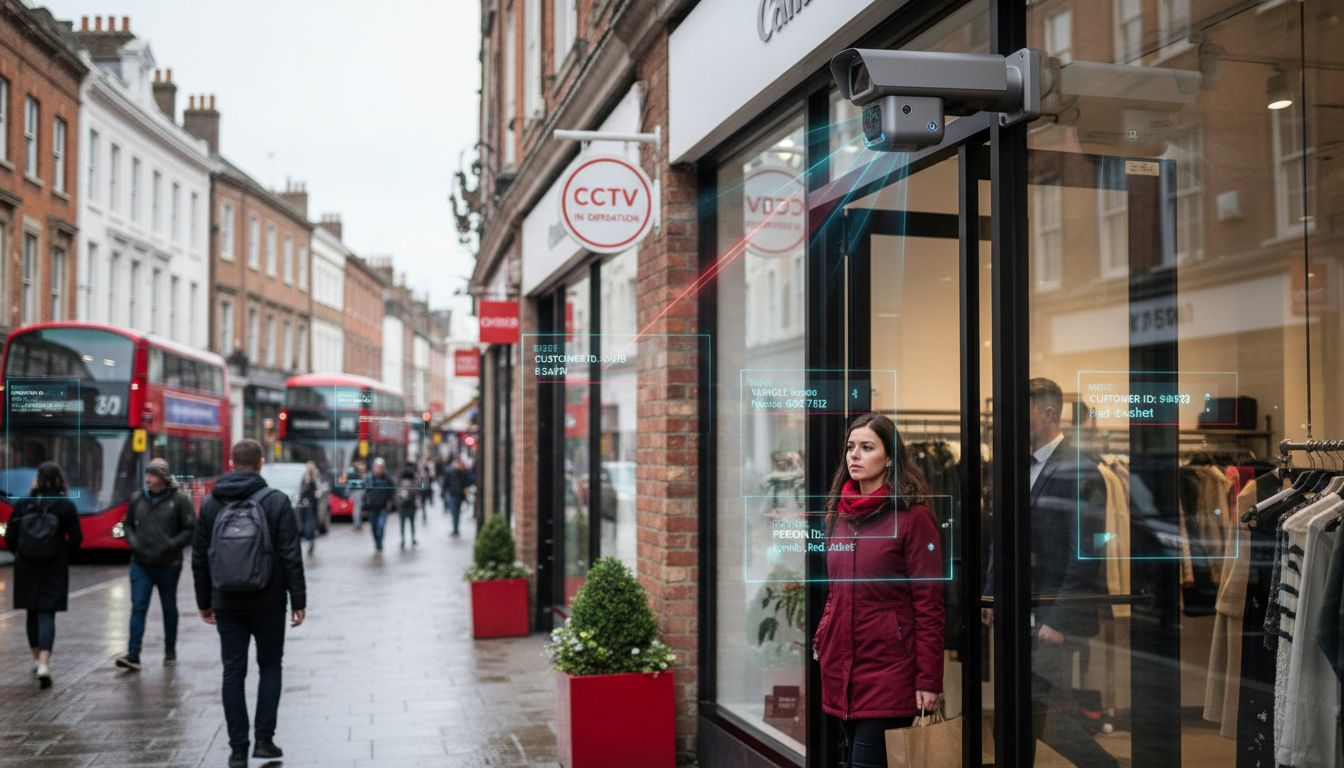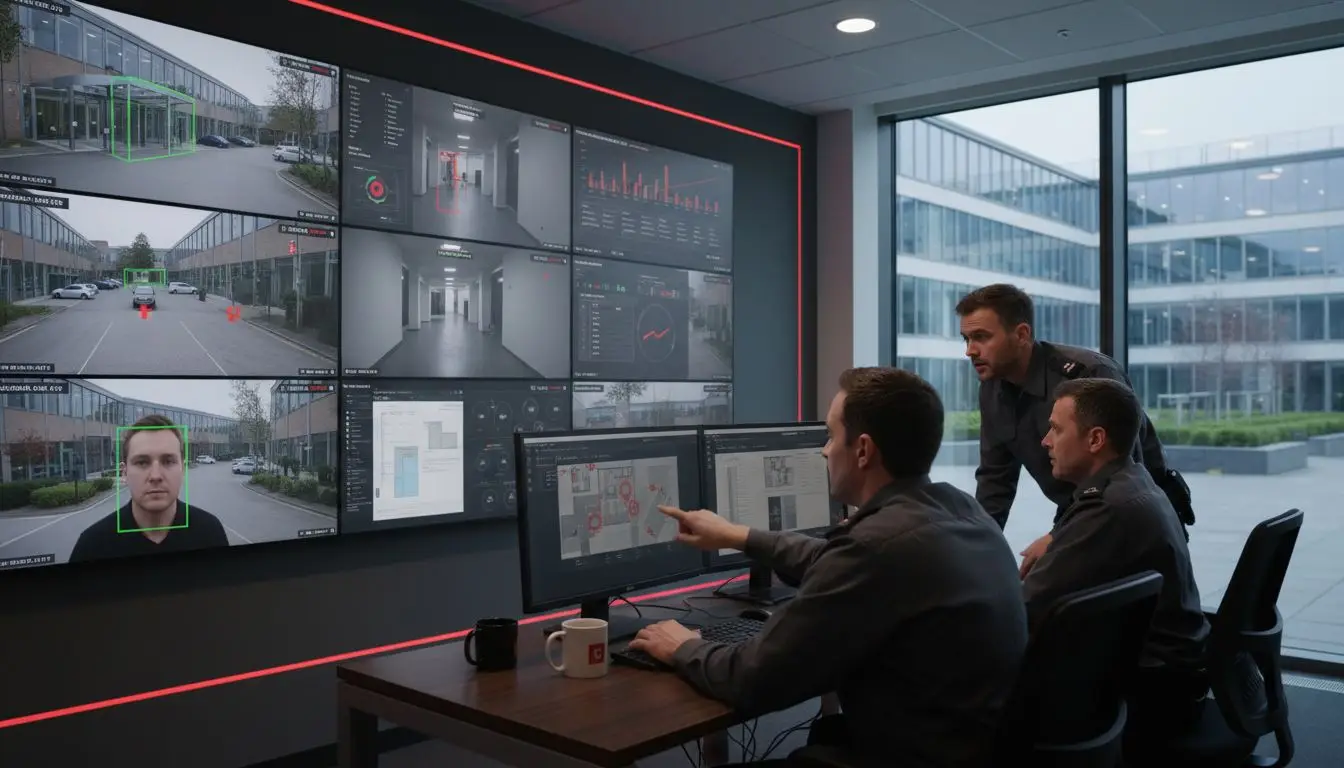Over 80 percent of UK businesses now use CCTV to protect property and people, but smart surveillance goes much further. With Artificial Intelligence inside, modern cameras can spot threats in real time and reduce false alarms. Smart CCTV turns static footage into powerful insight, helping you respond faster if something happens. As security risks grow and privacy rules get tougher, understanding these advanced systems can make all the difference when choosing the right protection.
Table of Contents
- Defining Smart CCTV And Core Concepts
- Types Of Smart CCTV Systems Explained
- How Smart CCTV Technology Works
- Legal And Privacy Obligations In The UK
- Costs, Benefits, And Common Pitfalls
Key Takeaways
| Point | Details |
|---|---|
| Technological Advancement | Smart CCTV systems leverage AI for intelligent monitoring, making real-time assessments and alerts possible. |
| Diverse System Types | Options include IP, HD analog, and wireless cameras, each catering to specific needs and environments. |
| Legal Compliance | Installation must adhere to UK regulations regarding privacy, data handling, and transparency in surveillance activities. |
| Cost-Benefit Analysis | Benefits include enhanced security and advanced features, but careful evaluation of costs and integration issues is crucial. |
Defining Smart CCTV and Core Concepts
Smart CCTV represents a technological leap beyond traditional surveillance systems, transforming passive monitoring into an intelligent security solution. According to research from smart camera services, these advanced systems integrate Artificial Intelligence (AI) technologies to dramatically enhance security capabilities.
At its core, a smart camera is more than just a recording device. As defined by Wikipedia, it’s a self-contained vision system with built-in image sensors and processing capabilities that enable automated decision-making. This means the camera can now do far more than simply capture footage:
- Detect potential security breaches in real-time
- Distinguish between normal and suspicious activities
- Provide instant alerts for specific behavioural patterns
- Count people and track movement within a designated area

When exploring key features of modern CCTV systems, smart technologies offer unprecedented levels of intelligent surveillance. These systems go beyond traditional motion detection, using complex algorithms to understand context and potential threats, essentially creating a proactive security environment that adapts and responds dynamically to changing circumstances.
Types of Smart CCTV Systems Explained
Smart CCTV systems have evolved significantly, offering multiple technological approaches to security surveillance. According to contact security services research, these systems now encompass diverse camera technologies designed to meet varying security requirements.
The primary types of smart CCTV systems include:
- IP Cameras: Network-based cameras transmitting video digitally
- HD Analog Cameras: Traditional cable-based systems with high-definition capabilities
- Wireless Cameras: Flexible installation options with remote connectivity
When exploring the evolving landscape of smart home security, it’s crucial to understand how these different systems operate. IP cameras, for instance, offer superior image quality and advanced analytical capabilities, allowing for remote monitoring and sophisticated threat detection. Wireless cameras provide unparalleled installation flexibility, particularly in locations where cable routing might be challenging.
Each system brings unique advantages to the table. Analog cameras remain cost-effective and reliable, while IP cameras offer cutting-edge technology with intelligent tracking and detailed image analysis. The right choice depends on specific security needs, budget constraints, and the physical environment where the system will be deployed.
Here’s a comparison of the main types of smart CCTV systems and their unique features:
| Type of CCTV | Key Advantages | Typical Use Cases |
|---|---|---|
| IP Camera | High image quality Remote access AI analytics | Offices Retail stores Smart homes |
| HD Analog | Cost-effective Reliable Easy upgrade path | Warehouses Car parks Industrial sites |
| Wireless | Flexible placement Quick setup No cabling needed | Rental properties Temporary sites Listed buildings |
How Smart CCTV Technology Works
Smart CCTV technology represents a quantum leap in security surveillance, transforming passive recording into an intelligent monitoring system. According to SMC UK research, these advanced systems utilize high-definition cameras equipped with sophisticated video analytics to proactively identify and respond to potential security threats.
At the core of smart CCTV technology are intelligent processing capabilities. As explained by Wikipedia, these cameras can process captured images internally using built-in sensors and processors, enabling real-time analysis without external computing resources. This means the camera itself becomes a smart decision-making device.
Key technological features include:
- Advanced motion detection algorithms
- Intelligent loitering alerts
- Automatic threat identification
- Real-time image processing
When exploring AI analytics for enhanced security, the technology goes beyond traditional surveillance. Smart CCTV can now distinguish between routine movements and potential security risks, dramatically reducing false alarms and providing more accurate threat assessment. The system continuously learns and adapts, creating a dynamic security solution that evolves with changing environmental conditions.
Legal and Privacy Obligations in the UK
Smart CCTV systems in the United Kingdom operate within a comprehensive legal framework designed to balance security needs with individual privacy rights. According to the Wikipedia entry on the Surveillance Camera Code of Practice, the Protection of Freedoms Act 2012 establishes critical guidelines for responsible surveillance camera usage.
Key legal considerations for CCTV installations include protecting individual privacy, ensuring data is collected and stored responsibly, and maintaining transparency about surveillance activities. This means businesses and property owners must be clear about where cameras are positioned, why they are being used, and how the recorded footage will be managed.
Specific legal obligations encompass:
- Displaying clear signage indicating CCTV monitoring
- Limiting camera coverage to necessary areas
- Securing and restricting access to recorded footage
- Complying with data protection regulations
- Ensuring footage is deleted after a reasonable retention period
When exploring home CCTV installation in the UK, it’s crucial to understand that specialized systems like Automatic Number Plate Recognition (ANPR) are subject to even stricter regulations. As documented in Wikipedia, these systems must carefully balance law enforcement objectives with individual privacy considerations, demonstrating the nuanced approach UK regulations take towards surveillance technologies.
Costs, Benefits, and Common Pitfalls
Smart CCTV systems represent a sophisticated investment in security technology that requires careful consideration of both financial and operational factors. According to Posh UK research, these systems offer significant benefits like high-resolution video, remote access, and intelligent detection features, but they also come with notable challenges.
The primary benefits of smart CCTV include enhanced security monitoring, real-time alerts, and advanced threat detection capabilities. However, potential pitfalls demand thorough evaluation. As noted by smart camera services, upgrading to AI-powered systems introduces complexities such as potential integration challenges with existing infrastructure and the need to ensure strict compliance with privacy regulations.
Key considerations include:
- Initial installation costs
- Required internet bandwidth and connectivity
- Ongoing maintenance expenses
- Complexity of system integration
- Privacy and legal compliance requirements
When exploring the key features of modern CCTV systems, businesses and homeowners must balance technological capabilities with budgetary constraints. The most effective smart CCTV solutions are those that provide a seamless blend of advanced security features, user-friendly interfaces, and cost-effective implementation, ultimately delivering peace of mind without breaking the bank.
Take Control of Your Security with Smart CCTV Solutions
Understanding the complexities of smart CCTV and the challenges of integrating advanced AI-powered systems can feel overwhelming. If you want to protect your home or business while staying fully compliant with UK privacy laws and avoiding costly pitfalls you need a security solution tailored to your unique needs. Our expertise in installing CCTV, burglar alarms and access control systems means we can simplify the process and provide the intelligent surveillance your property deserves.

Discover how you can benefit from cutting-edge technology combined with professional installation at 247cctv.co.uk. From high-definition IP cameras to flexible wireless options we offer complete security packages designed for your environment and budget. Visit our home security page now and take the first step towards a safer, smarter future. Don’t wait until a threat happens act now and secure peace of mind today.
Frequently Asked Questions
What are the key features of smart CCTV systems?
Smart CCTV systems typically include advanced motion detection algorithms, real-time image processing, intelligent loitering alerts, and automatic threat identification, offering enhanced security monitoring compared to traditional systems.
How do smart CCTV systems differ from traditional CCTV systems?
Smart CCTV systems integrate artificial intelligence and advanced video analytics, allowing them to proactively identify potential security threats, distinguish between normal and suspicious activities, and provide instant alerts, unlike traditional systems that merely record footage.
What types of smart CCTV systems are available?
The main types of smart CCTV systems include IP cameras, which offer high image quality and remote access; HD analog cameras, which are cost-effective and reliable; and wireless cameras, known for their flexible placement and easy setup options.
What legal considerations should be kept in mind when installing smart CCTV systems?
When installing smart CCTV systems, it is essential to comply with privacy regulations, display clear signage indicating surveillance, limit camera coverage to necessary areas, secure recorded footage, and ensure footage is deleted after a reasonable retention period.
Recommended
- The Essential Guide to Home CCTV in the UK – 247 CCTV Security Ltd
- The Essential Guide to Home CCTV in the UK – 247 CCTV Security Ltd
- The Evolving Landscape of Smart Home Security: What You Need to Know – 247 CCTV Security Ltd
- Latest News and Updates | 247 CCTV Security
- Smart Home Technologies That Can Be Hacked and What You Can Do About It
- Shutters and Home Security: UK Guide for Safer Homes 2025 | Shutter World

